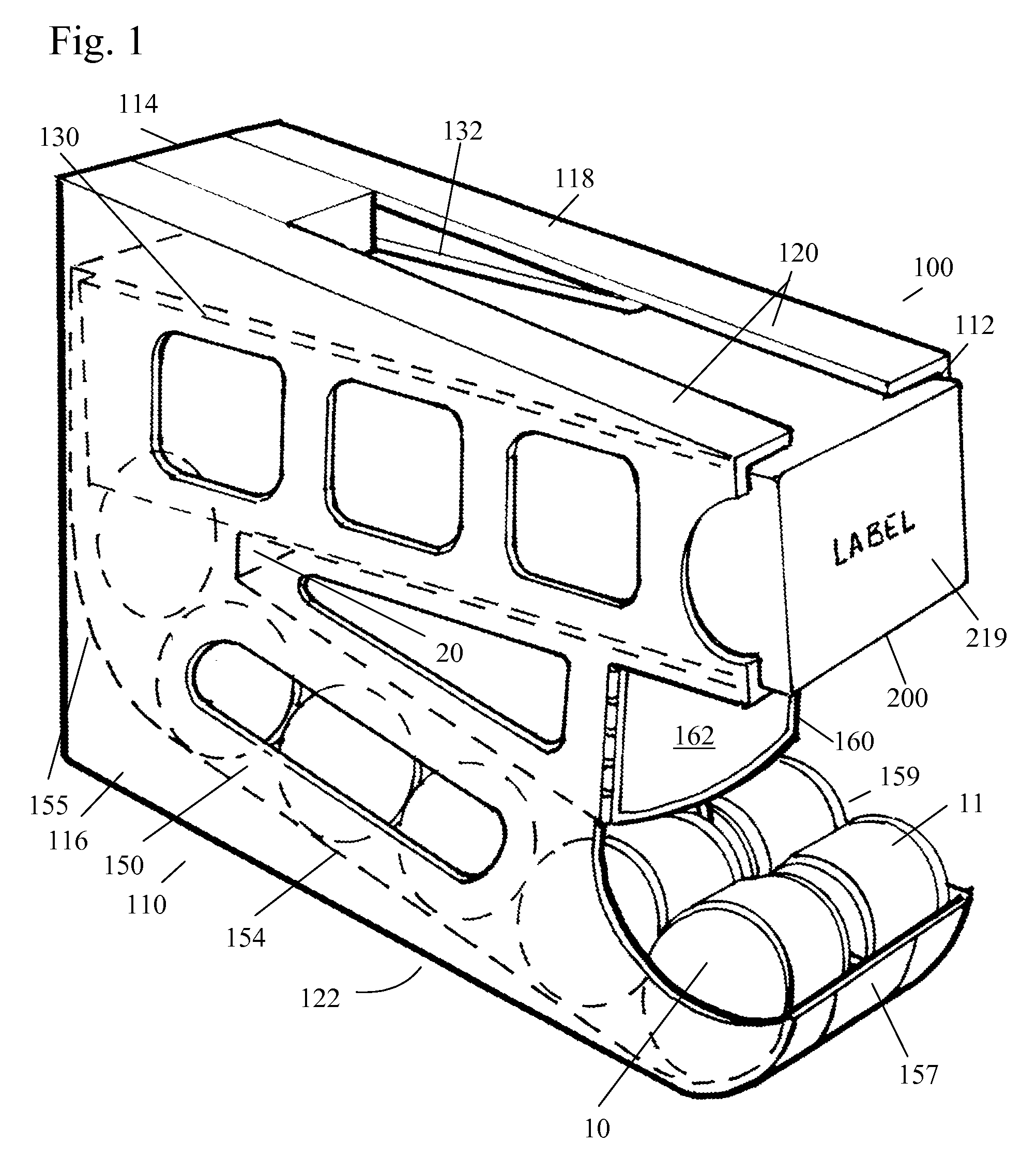Product dispenser assembly and cartridge for holding product
a product and product technology, applied in the field of retail packaging and displays, can solve the problems of affecting the issuance of products, affecting the sex of products, so as to reduce the complexity of the stocking process and the time involved in the stocking process. , the effect of easy removal
- Summary
- Abstract
- Description
- Claims
- Application Information
AI Technical Summary
Benefits of technology
Problems solved by technology
Method used
Image
Examples
second embodiment
or Shelves
[0078]Now referring to FIGS. 13a-f to 20, a dispenser 300 according to a second embodiment is illustrated. In this embodiment, the dispenser 300 can be formed of an upright frame 310 that includes a number of support surfaces 320, such as horizontal shelves. For example, the support surface 320 can be a planar platform that includes a top surface 322 and an opposing bottom surface 324. The platform 320 is constructed so that a biased product feed mechanism 330 is disposed therein and is configured to controllably advance the product as it is removed by consumers.
[0079]More specifically, the feed mechanism 330 includes a bias member 340 that is associated with the platform 320 and is coupled to a pusher plate 350. For example, the biased feed mechanism can be in the form of a spring assisted pusher plate module that includes the pusher plate 350. The bottom surface 324 is tracked, slotted or channeled 325 to accept installation of the spring assisted pusher plate module. Fo...
PUM
 Login to View More
Login to View More Abstract
Description
Claims
Application Information
 Login to View More
Login to View More - R&D
- Intellectual Property
- Life Sciences
- Materials
- Tech Scout
- Unparalleled Data Quality
- Higher Quality Content
- 60% Fewer Hallucinations
Browse by: Latest US Patents, China's latest patents, Technical Efficacy Thesaurus, Application Domain, Technology Topic, Popular Technical Reports.
© 2025 PatSnap. All rights reserved.Legal|Privacy policy|Modern Slavery Act Transparency Statement|Sitemap|About US| Contact US: help@patsnap.com



